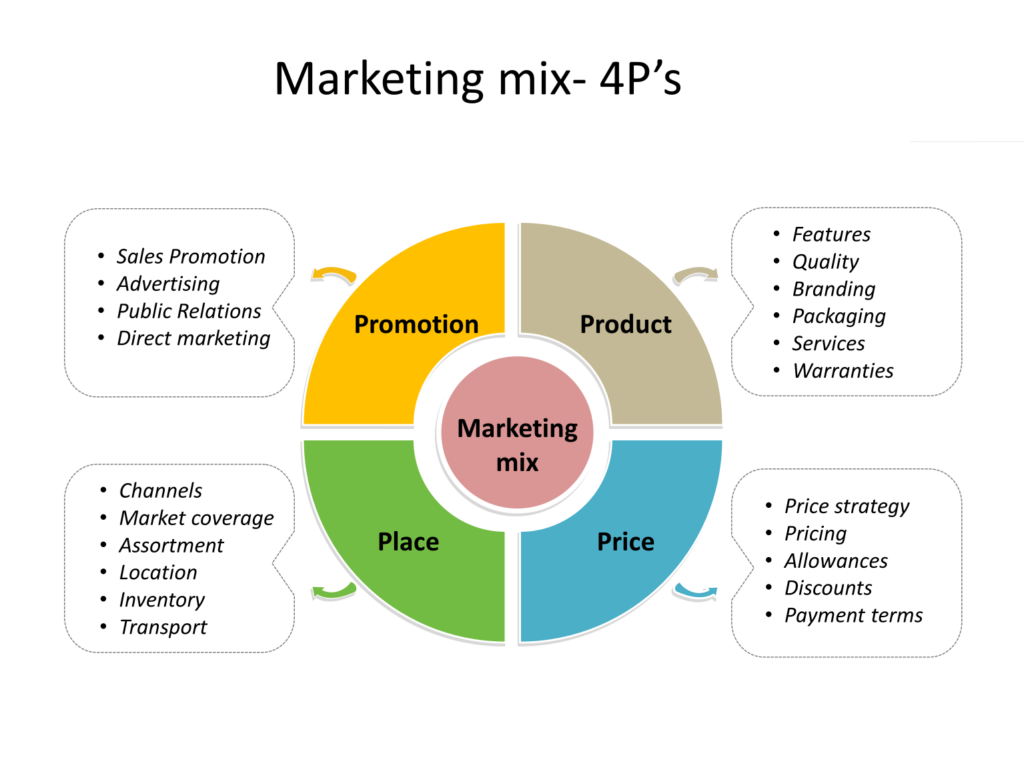Marketing Strategy Theoretical Framework
A well-defined and effective marketing strategy is instrumental in determining the success of any organization. A robust marketing strategy serves as the roadmap that guides businesses towards achieving their objectives, whether it’s increasing market share, expanding customer base, or enhancing brand reputation. Without a carefully crafted plan, businesses risk losing their competitive edge and struggling to connect with their target audience effectively.
Overview of the Marketing Strategy Theoretical Framework
The Marketing Strategy Theoretical Framework provides a structured and systematic approach to developing comprehensive marketing strategies. This framework draws from various key principles and concepts in marketing, combining them into a cohesive model that aligns marketing efforts with overall business goals. By leveraging this framework, businesses can gain valuable insights, better understand their target market, and craft tailored marketing strategies that resonate with their audience.
At its core, the Marketing Strategy Theoretical Framework encompasses essential elements, such as market analysis, target audience identification, setting clear marketing objectives, designing a well-rounded marketing mix, and diligent implementation and evaluation. By considering these interconnected elements, businesses can create a well-balanced and synergistic marketing approach that maximizes their chances of success.
What is the Aim of this Post?
The primary purpose of this post is to equip businesses with a structured and comprehensive approach to crafting effective marketing strategies using the Marketing Strategy Theoretical Framework. By diving into each component of the framework, we will explore the significance of market analysis and understanding the external environment, honing in on the target audience, and setting SMART marketing objectives.
Additionally, we will delve into the development of the marketing mix, encompassing product strategy, pricing, distribution, and promotion. Understanding the synergies between these elements allows businesses to create compelling marketing campaigns that drive customer engagement and loyalty. As we progress, we will emphasize the importance of seamless execution, proper resource allocation, and diligent monitoring and evaluation. The framework empowers businesses to stay agile, make data-driven decisions, and optimize their marketing strategies for continuous improvement.
Ultimately, our aim is to provide businesses with the knowledge and tools necessary to navigate the complex marketing landscape successfully. Whether a startup seeking to make a memorable entrance or an established corporation looking to revitalize its marketing efforts, the Marketing Strategy Theoretical Framework offers a tried-and-tested approach to propel businesses towards growth, prosperity, and a thriving market presence. So, let’s embark on this journey together, unlocking the secrets of effective marketing strategies that pave the way for sustainable success.

I. Theoretical Foundation of Marketing Strategy
A. Overview of Marketing Strategy and Its Role in Achieving Organizational Goals
Marketing strategy is the systematic and deliberate approach that businesses adopt to achieve their specific marketing objectives and overall organizational goals. It serves as the bridge between an organization and its target market, guiding the allocation of resources and efforts to create value for customers and generate profitable outcomes. A well-crafted marketing strategy aligns business activities, fosters brand growth, and establishes a competitive advantage in the market.
B. Key Principles and Concepts in Marketing Strategy Development
- Market Segmentation and Targeting: Market segmentation involves dividing the broader market into distinct groups based on shared characteristics, preferences, and needs. Targeting, on the other hand, involves selecting the most relevant segments to focus marketing efforts on, thereby optimizing resource utilization and enhancing message resonance.
- Competitive Advantage and Differentiation: Competitive advantage refers to the unique strengths and advantages that set a business apart from its competitors. Developing a clear differentiation strategy allows a company to position itself uniquely in the market and communicate its value proposition effectively.
- Positioning and Brand Identity: Positioning is the art of crafting a distinct image and perception of a brand in the minds of consumers. Effective brand identity encompasses the values, personality, and promises that a brand represents, fostering brand loyalty and recognition.
- Marketing Mix (Product, Price, Place, Promotion): The marketing mix encompasses the four fundamental elements that businesses use to influence customers’ decision-making. The product involves designing and offering valuable solutions, Price relates to setting competitive and attractive pricing, Place entails selecting appropriate distribution channels, and Promotion involves strategic communication to reach and engage the target audience.
- SWOT Analysis (Strengths, Weaknesses, Opportunities, Threats): SWOT analysis is a powerful tool for understanding an organization’s internal strengths and weaknesses, as well as external opportunities and threats. This analysis aids in making informed decisions and adapting the marketing strategy to capitalize on strengths and address weaknesses.
C. The Significance of Aligning Marketing Strategy with Overall Business Objectives
An effective marketing strategy must be aligned with the overall business objectives to ensure a cohesive and integrated approach. By aligning marketing efforts with the broader organizational goals, businesses can achieve synergy across various departments, optimize resource allocation, and drive consistent messaging and customer experiences.
Moreover, alignment with business objectives enables businesses to measure the effectiveness of marketing initiatives accurately. By linking marketing outcomes to key performance indicators tied to business objectives, organizations can gauge the impact of their marketing efforts on overall success.
In conclusion, understanding the theoretical foundation of marketing strategy provides businesses with a solid framework for developing well-crafted and purposeful marketing initiatives. By comprehending the core principles and concepts, businesses can strategically position themselves in the market, foster brand loyalty, and achieve sustainable growth by fulfilling the needs and desires of their target audience. Effective marketing strategy serves as the compass that guides organizations on their path to success, ensuring they stay responsive to market dynamics and consistently deliver value to their customers.

II. Analyzing the External Environment
A. Conducting a PESTEL Analysis (Political, Economic, Social, Technological, Environmental, Legal)
The PESTEL analysis is a powerful tool used to assess the external macro-environmental factors that can impact a business. By analyzing these six key dimensions, businesses can gain valuable insights into the opportunities and threats that exist in the broader environment:
B. Understanding Industry Dynamics and Competitive Forces using Porter’s Five Forces Model
Porter’s Five Forces model is a strategic framework that helps businesses understand the competitive dynamics within their industry. The five forces include:
C. Identifying Market Trends and Opportunities for Growth
By closely monitoring market trends and emerging opportunities, businesses can proactively position themselves to capitalize on changing consumer preferences and market dynamics. Identifying growth opportunities involves:
Incorporating insights from the external environment analysis, businesses can develop a well-informed and future-oriented marketing strategy that maximizes opportunities and mitigates potential threats.

III. Understanding the Target Market
A. Defining the Target Audience and Customer Personas
Defining the target audience involves identifying the specific group(s) of consumers who are most likely to benefit from and engage with the company’s products or services. Creating customer personas helps businesses gain a deeper understanding of their target audience’s demographics, motivations, behaviours, and pain points.
B. Conducting Market Research and Consumer Behavior Analysis
Conducting thorough market research allows businesses to gain insights into consumer preferences, market trends, and competitors. Consumer behaviour analysis helps understand why consumers make specific purchasing decisions and how they interact with the brand.
C. Evaluating Customer Needs, Preferences, and Pain Points
Understanding customer needs, preferences, and pain points enables businesses to tailor their marketing efforts to address these specific aspects effectively. By providing solutions that resonate with customers, businesses can enhance their value proposition and foster customer loyalty.
IV. Setting Marketing Objectives and Goals
A. Establishing SMART (Specific, Measurable, Achievable, Relevant, Time-bound) Marketing Objectives
Setting SMART marketing objectives ensures that goals are well-defined, quantifiable, realistic, and aligned with the overall marketing strategy and business objectives. SMART objectives serve as the foundation for focused and results-driven marketing efforts.
B. Aligning Marketing Objectives with Overall Business Goals
Aligning marketing objectives with overall business goals ensures that marketing efforts contribute directly to the organization’s growth and success. This synergy between marketing and business objectives promotes a cohesive and integrated approach to achieving success.
C. Determining Key Performance Indicators (KPIs) to Measure Marketing Success
Identifying relevant KPIs allows businesses to track and measure the effectiveness of marketing initiatives in achieving the set objectives. Whether it’s lead generation, conversion rates, customer retention, or brand awareness, KPIs provide actionable insights to optimize marketing strategies for optimal outcomes.
By systematically analyzing the external environment, understanding the target market, and setting clear marketing objectives, businesses can develop a robust and strategic marketing plan. Armed with this knowledge, they are better equipped to create impactful marketing campaigns that resonate with their audience, foster brand loyalty, and drive business growth and success.

V. Developing the Marketing Mix
A. Product Strategy
Product development and innovation are essential for businesses to stay competitive and meet evolving customer needs. This involves continuous improvement and introducing new products or features that add value to the target market. Understanding customer feedback and market trends guides businesses in refining their existing products or creating innovative solutions that stand out in the market.
Effective product positioning and branding are key to differentiating a business’s offerings from competitors. By identifying a unique selling proposition (USP) and communicating it clearly, businesses can create a distinct image in the minds of consumers. Branding elements, such as logos, taglines, and brand messaging, reinforce the desired positioning and foster brand recognition and loyalty.
Understanding the product lifecycle is crucial for planning marketing strategies at different stages. Products go through the introduction, growth, maturity, and decline phases. By anticipating the changes in demand and adjusting marketing efforts accordingly, businesses can maximize the product’s lifecycle and maintain relevance in the market.
B. Pricing Strategy
Choosing the right pricing model and strategy directly impacts a business’s profitability and market positioning. Pricing models include cost-based pricing, value-based pricing, and competitor-based pricing. Strategic pricing strategies, such as premium pricing, penetration pricing, or skimming pricing, align with overall marketing objectives and target market preferences.
Conducting competitive pricing analysis allows businesses to evaluate their pricing against competitors. By understanding the pricing landscape, businesses can adjust their pricing strategies to gain a competitive advantage and capture market share effectively.
Assessing price elasticity helps businesses understand how changes in pricing impact demand for their products. Price sensitivity analysis aids in identifying the price range that optimizes revenue and profitability without significant customer resistance.
C. Distribution Strategy
Selecting the right distribution channels to reach the target market is critical for product accessibility and customer convenience. Businesses must evaluate options such as direct selling, wholesalers, retailers, or online platforms based on their product characteristics and target audience preferences. Effective channel management ensures smooth logistics and optimal distribution efficiency.
Logistics and supply chain management play a crucial role in ensuring the timely delivery of products to customers. Streamlining the supply chain process, optimizing inventory levels, and minimizing distribution costs contribute to improved customer satisfaction and operational efficiency.
D. Promotion Strategy
A cohesive and integrated approach to marketing communications ensures consistency in brand messaging across various channels. IMC involves coordinating advertising, public relations, social media, and other promotional efforts to create a unified brand experience for customers.
Selecting the appropriate advertising channels and mediums allows businesses to effectively reach their target audience. Public relations efforts help build brand credibility and manage the organization’s reputation. Digital marketing leverages online platforms and tools to enhance brand visibility and engage with the digital-savvy audience.
Sales promotions, discounts, and special offers are used strategically to stimulate immediate purchases and increase customer loyalty. Engaging customers through loyalty programs, personalized experiences, and exceptional customer service fosters long-term relationships and word-of-mouth referrals.
By strategically developing the marketing mix, businesses can create a well-rounded and impactful marketing plan. A thoughtful product strategy, competitive pricing, efficient distribution, and compelling promotion efforts collectively position the business for success in the market. By considering customer needs and preferences, and adapting marketing strategies to market trends, businesses can forge meaningful connections with their target audience, driving customer satisfaction, and ultimately, business growth.
VI. Implementation and Execution
A. Developing a Detailed Marketing Plan and Timeline
A successful marketing strategy requires a well-defined plan and timeline for execution. The marketing plan outlines specific activities, campaigns, and initiatives to be undertaken, along with corresponding timelines and milestones. It serves as a roadmap that ensures all marketing efforts are cohesive, aligned, and progress smoothly towards achieving the set objectives.
B. Allocating Resources and Budget Effectively
Resource allocation is a critical aspect of successful marketing implementation. Allocating the right resources, including human capital, finances, and technology, ensures that each marketing activity receives adequate support. An effective budgeting process enables businesses to prioritize marketing initiatives based on their strategic importance and expected returns.
C. Creating an Action Plan and Assigning Responsibilities
An action plan breaks down the marketing plan into actionable steps, assigning specific responsibilities and deadlines to team members. Clearly defining roles and responsibilities fosters accountability, ensures seamless collaboration, and facilitates effective communication within the marketing team.
VII. Monitoring and Evaluation
A. Using Marketing Analytics and Metrics to Track Performance
Monitoring marketing performance requires leveraging marketing analytics tools and key performance indicators (KPIs). These metrics measure the success of various marketing initiatives, including website traffic, conversion rates, customer acquisition cost (CAC), customer lifetime value (CLV), and return on investment (ROI). Analytics data provides insights into the effectiveness of marketing efforts and enables data-driven decision-making.
B. Conducting Regular Reviews and Adjustments Based on Data Insights
Regular reviews and assessments of marketing performance are essential to identify areas of improvement and make data-driven adjustments. Analyzing trends and patterns from marketing data helps businesses understand what strategies are working and where adjustments are needed. Flexibility and adaptability in response to market changes allow businesses to stay relevant and competitive.
C. Assessing the Effectiveness of the Marketing Strategy in Achieving Objectives
Periodic evaluation of the marketing strategy’s effectiveness against set objectives is crucial for measuring success. By comparing actual results with the initially established marketing objectives, businesses can determine if the strategy is on track or requires refinement. Analyzing the overall impact on business growth and profitability provides a comprehensive view of the marketing strategy’s effectiveness.
By diligently implementing the marketing plan, effectively allocating resources, and setting up a robust monitoring and evaluation process, businesses can ensure that their marketing strategy stays on course and aligns with organizational goals. Continuous evaluation and data-driven adjustments empower businesses to optimize their marketing efforts, maximize returns, and foster long-term success in the ever-evolving market landscape.
Conclusion
In conclusion, the Marketing Strategy Theoretical Framework equips businesses with a systematic approach to developing effective marketing strategies. Understanding the external environment, defining target markets, and setting SMART objectives are key elements. Emphasizing the importance of structured planning, businesses can align marketing efforts with overall goals, fostering cohesiveness and impactful initiatives.
Leveraging this framework drives success and sustainable growth in today’s dynamic market. Stay adaptable, monitor performance, and continuously improve. Armed with this knowledge, businesses can thrive, innovate, and succeed in their industry. Embrace the power of a structured marketing approach for enduring success.
Resources for For further studying
For further studying and expanding your knowledge on marketing strategy, here are some valuable resources:
Books:
- “Marketing Management” by Philip Kotler and Kevin Lane Keller: This comprehensive textbook covers all aspects of marketing management, including strategy development, consumer behaviour, branding, and more.
- “The New Rules of Marketing and PR” by David Meerman Scott: This book explores the digital marketing landscape, offering insights into leveraging social media, content marketing, and online PR for business success.
- “Blue Ocean Strategy” by W. Chan Kim and Renée Mauborgne: This influential book introduces a strategic framework for creating uncontested market spaces and making competition irrelevant.
Online Courses:
- Coursera: Offers various marketing strategy courses from top universities and institutions.
- Udemy: Provides a wide range of marketing courses covering different aspects of marketing strategy and implementation.
Marketing Journals and Articles:
- Harvard Business Review: Features a wealth of articles on marketing strategy and management.
- Journal of Marketing: A reputable academic journal covering the latest research and insights in marketing.
Marketing Blogs and Websites:
- Neil Patel’s Blog: Neil Patel is a leading digital marketing expert, and his blog offers practical insights and tips for marketing success.
- HubSpot Blog: HubSpot’s blog covers a diverse range of marketing topics, including strategy, content marketing, and inbound marketing.
Marketing Conferences and Webinars:
- Attend marketing conferences and webinars, such as those hosted by MarketingProfs, Moz, and Content Marketing World, to stay updated on the latest trends and best practices.
Marketing Associations and Industry Publications:
- American Marketing Association (AMA): Provides resources, research, and events related to marketing strategy and practices.
- Marketing Week: An industry publication that covers marketing news, insights, and trends.
Online Marketing Forums and Communities:
- Reddit’s /r/marketing: A subreddit dedicated to discussions on marketing topics, strategies, and case studies.
Remember that marketing is a dynamic field, and staying informed about the latest trends and developments is crucial for success. Continuously seek out resources from reputable sources to refine your marketing skills and gain a deeper understanding of how to create effective marketing strategies that drive results.

